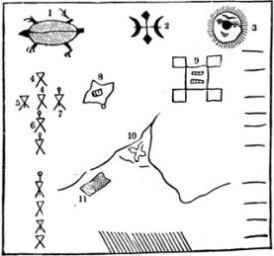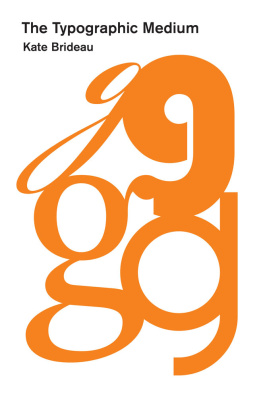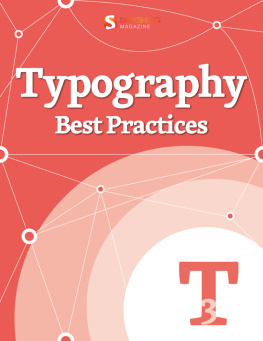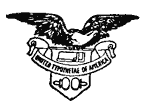Project Gutenberg's Books Before Typography, by Frederick W. Hamilton
This eBook is for the use of anyone anywhere at no cost and with
almost no restrictions whatsoever. You may copy it, give it away or
re-use it under the terms of the Project Gutenberg License included
with this eBook or online at www.gutenberg.net
Title: Books Before Typography
Typographic Technical Series for Apprentices #49
Author: Frederick W. Hamilton
Release Date: December 30, 2009 [EBook #30803]
Language: English
*** START OF THIS PROJECT GUTENBERG EBOOK BOOKS BEFORE TYPOGRAPHY ***
Produced by Barbara Tozier, Bill Tozier, Stephanie Eason,
and the Online Distributed Proofreading Team at
http://www.pgdp.net.
TYPOGRAPHIC TECHNICAL SERIES FOR APPRENTICESPART VIIINO. 49
BOOKS BEFORE
TYPOGRAPHY
A PRIMER of INFORMATION ABOUT THE
INVENTION OF THE ALPHABET AND
THE HISTORY OF BOOK-MAKING
UP TO THE INVENTION OF
MOVABLE TYPES
BY
FREDERICK W. HAMILTON, LL.D.
EDUCATIONAL DIRECTOR
UNITED TYPOTHET OF AMERICA
PUBLISHED BY THE COMMITTEE ON EDUCATION
UNITED TYPOTHETAE OF AMERICA
1918
Copyright , 1918
United Typothetae of America
Chicago, Ill.
PREFACE
An attempt has been made in this book to trace briefly the story of the book from the earliest attempts made by mankind to convey a message by marks on some substance down to the invention of movable types. The development of writing is rapidly traced from the earliest known pictures and sign marks to the present day. The discussion covers the subjects of writing materials and how they were made; the evolution of the book; the conditions of manufacture, distribution, and preservation of books before printing, and the conditions out of which sprang the invention of typographic printing.
It is believed that a comprehensive knowledge of the main facts in this long story will be of great value to the young printer, and it is hoped that he may be interested to continue the study in some of the many very excellent books which are available. A short list of a few of the best and most accessible authorities in English will be found on page 44. It has not been thought worth while to refer to books in other languages.
The story of the efforts of men to convey their thoughts to the absent is one of absorbing interest and leads into many pleasant byways of knowledge. While we are studying the processes and materials of a trade by which we hope to gain a livelihood it is well to know something about the men of the past whose accomplishments we inherit. To know something about the men of another time who made this time possible, what they did, what manner of men they were, how they lived, and what they created for us, is the task of this and the following volumes in Part VIII of this series.
CONTENTS
| page |
| Chapter I | The Origin of the Alphabet |
| Chapter II | Writing Materials |
| Chapter III | The Evolution of the Book |
| Chapter IV | Making the Manuscripts |
| Chapter V | Ancient and Medival Libraries |
| Chapter VI | The Dawn of a New Era |
BOOKS BEFORE TYPOGRAPHY
CHAPTER I
The Origin of the Alphabet
The story of printing really begins with the earliest dawn of civilization. As soon as men developed a language, even of the simplest sort, they felt the necessity of a means of communication with those who were not present. This would be needed for the identification of property, the making of records, the sending of orders or information, the making of appointments, and many other purposes which would be developed by the needs of even the most rudimentary civilization. We accordingly find evidences of devices to accomplish these ends associated with the earliest human remains. While the cave man was disputing food and shelter with the cave bear, the sabre-tooth tiger, and the mammoth in those places which are now the seats of the most advanced civilizations, he scratched or painted outline sketches of the animals he fought, and perhaps worshipped, on the wall of a cave or on the flat surface of a spreading antler or a piece of bone.
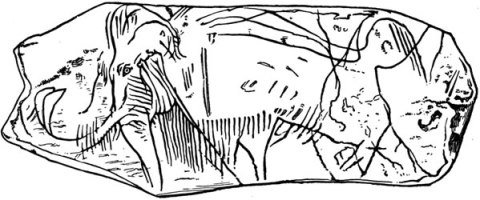
The oldest known attempt to carve a picture. It dates from the cave period and was found at Dordogne, France.
One of the greatest single steps in civilization was the advance from the use of rough stone implements and weapons to the use of chipped and finished stones for the same purpose, commonly referred to as the transition from the paleolithic to the neolithic age. Just how long ago that was no one knows and only geologists can guess. Among remains dating from this period of transition found in the little village of Mas dAzil in France, there have been discovered a number of painted pebbles. Whether these were game counters, ownership tags, records, or what not, no one can guess. Whether the marks on them were purely mnemonic signs, numerals, or verbal signs of some sort, no one knows. That they were in some way, however, the ancestors of modern printed matter is unquestionable.
Pebbles from Mas dAzil.
Among the earliest methods of communicating ideas to the absent, pictures hold the largest place. Other methods were knots, ordinarily known by the name quipus which they bear among the ancient Peruvians. The number and arrangements of the knots and the color of the cords made possible a considerable range of expression. Closely associated with these were tallies, or notched sticks, and wampum, or strings of colored shells or beads arranged in various designs. Here perhaps may also be classed the so-called Ogham inscriptions, made by arrangements of short lines in groups about a long central line. The short lines may be either perpendicular to the central line or at an angle to it. They may be above it, below it, or across it, thus providing a wide range of combinations with a corresponding variety of expression. These primitive methods survive in the rosary, the sailors log line with its knots or the knotted handkerchief which serves as a simple memorandum. They may run all the way from purely mnemonic signs to a fairly well developed alphabet.
More important in its development, however, was the picture. Primitive men all over the world very soon learned to make pictures, very crude and simple to be sure, but indicating fairly well what they stand for. These pictures may be so arranged and conventionalized as to convey a good deal of information. The position of a human figure may indicate hunger, sleep, hostility, friendship, or a considerable number of other things. A representation of a boat with a number of circles representing the sun or moon above it may indicate a certain number of days travel in a certain direction, and so on indefinitely. This method of writing was highly developed among the North American Indians, who did not, however, get beyond it.
